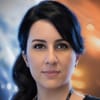In the aftermath of the terrorist attack at Pulse nightclub in Orlando, Facebook activated it’s Safety Check for the first time in America and #LoveIsLove is trending on Twitter and Instagram. Social media has mobilized hundreds of residents in Orlando to donate blood and help fund hospitals.
These are all great initiatives. It gives people a sense they are doing something at a time when it’s beyond our reach to help, yet feel compelled to show solidarity. But the reality is, apart from the folk lined up at blood banks in Orlando – tweeting for peace and temporarily changing your Facebook photo isn’t really helpful. It just makes us feel better – for a while. As American Vice President Joe Biden remarked today “Praying isn’t enough…” and he’s right. It isn’t. Hashtags and temporary rainbow profile pictures aren’t either.
Over the past 18 months I’ve been researching the lives, deaths and imprisonments of Australian Foreign Fighters and those committing domestic acts of terrorism, the information I’ve gathered via open source research shows that many of these men were criminals first and jihadi’s second.
Amongst Australia’s own foreign fighters and domestic terrorists, the path from criminal to extremist is known. Bias crimes in particular – the acts of violence motivated by race, religion, sexual orientation, disability or gender – also appear as alarming precursors to more extreme behaviours.
Foreign fighter and ISIS propagandist Zakarayah Raad died in 2014 fighting with ISIS in Iraq. Raad was known to authorities in Australia after being convicted of whipping a Muslim convert with an electric cord – for drinking alcohol and taking drugs, in his suburban Sydney home in 2011.
In 2012 Adnan Karabegovic hung a banner from a freeway overpass in the Melbourne suburb of Malvern saying “Get your troops out of Muslim lands you filthy Kafir.” He later hung another banner from a building which read “Get your troops out of Muslim lands you dirty convict pigs.” Karabegovic was arrested (although recently acquitted) of being in possession of an Al-Qaeda manual with the intent to build an incendiary device to deliberately start a bushfire. Before his arrest he was also found to have made attempts at purchasing a firearm.
Ahmed Elomar is now in jail for the brutal bashing of a Police Officer in the Hyde Park riots of 2012 in Sydney. Like his brother and deceased Foreign Fighter Mohammed Elomar, an association with Sheikh Feiz turned two rising boxing stars into violent extremists.
Sheik Feiz – himself having history of anti-semitic behaviour and inciting violence, is well known for using the internet to preach his extreme version of Salafism. In 2010 he encouraged his followers in an internet chat room to behead Geert Wilders (a Dutch anti-Islam campaigner) and it’s believe the Boston Bombing brothers Dzhokhar and Tamerlan Tsarnaev also drew inspiration online from Feiz.
Man Haron Monis, prior to the Sydney Siege had a long history of violent and sexual crime. Even before claiming political asylum in Australia in 1996, Monis had a demonstrated prensciprosity for extreme violence and fraud. The Iranian Government made this clear to Australian authorities, who later granted Monis asylum anyway. He went on to commit a litany of crimes in Australia before committing the act of terror that claimed the lives of two of his hostages.
Sydney man Omar Ammouche was charged with acquiring ammunition while on a firearms prohibition order in 2015 during counter terrorism raids; while notorious ISIS henchman Khaled Sharrouf had a history of petty theft and drug use.
Of most concern is Abdul Nacer Benbrika’s continued influence within local jihadi networks from his Barwon Prison jail cell in Melbourne. Imprisoned since a 2005 failed plot to blow up the Melbourne Cricket Ground, Benbrika is also linked to the planned attacks in Sydney that same year. Research links at least 20 Australian jihadi’s to Benbrika, including associates of Abdul Numan Haider who stabbed two Police Officers at Endeavour Hills in 2014. Before his death, Haider had previously been seen in a Dandenong shopping centre waving an Islamic State Flag.
While the number of those with criminal records and bias-based crime linkages may seem low – 6% out of the 134 Australian foreign fighters and domestic terrorists I’ve researched thus far, it would be logical to assume that law enforcement and intelligence agencies hold more information than is currently in the public domain.
With a distinct trend of precursive criminality appearing – both in Australian and International studies – law enforcement and intelligence agencies should now be paying particular attention to would-be-jihadi’s with bias crime indicators and criminal histories, no matter how petty the crime.
More concerning again, as Waleed Aly pointed out on The Project in 2015, is that we know ISIS’ intent because they repeatedly tell us what that is. Only last month ISIS released a 31-minute long audio screed directing its followers to conduct bias based attacked during the Muslim holy month of Ramadan.
In declaring his allegiance to ISIS before the attack in a 911 call, shooter Omar Mateen acted on the instructions he was given. Attacking a Gay nightclub is a biased based target selection – a bias crime. Not dissimilar to the attack in Paris on a Jewish supermarket or Christians celebrating Easter in Pakistan.
If we are to learn anything from Orlando it’s that we need to pay far greater attention to the criminal trajectory of at-risk individuals and those on the path to radicalisation. Bias based target selection is not new, but it is distinct. From urbanised bias based insurgencies to lone-acts of terror, we know current threats are no longer symmetric and we should adjust our preventative and response approaches accordingly.
Most importantly, the actions of our leaders in promoting social cohesion must speak far louder than their words.
The time for talk is over.
